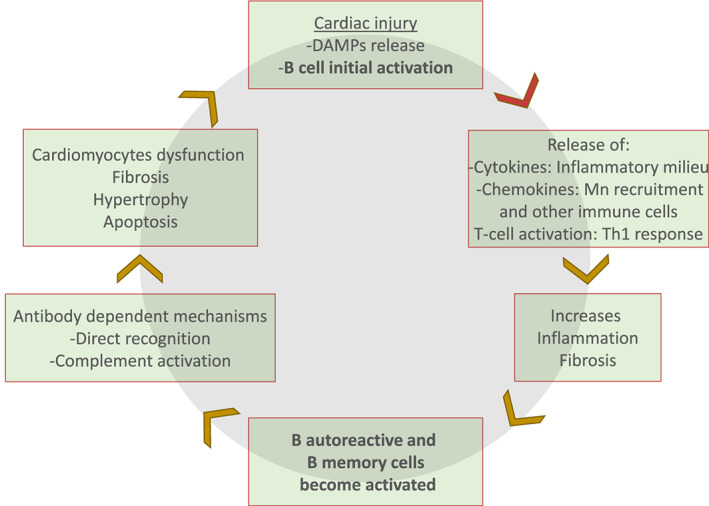Figure 3.

B cells play a central role in heart failure. After the cardiac injury, damage‐associated molecular patterns (DAMPs) are recognized, processed, and presented by resident B cells that become activated in a T‐dependent mechanism. In response, B cells secrete cytokines and chemokines that contribute with the inflammatory milieu along with the activated T cells mainly by a Th1 response (tumour necrosis factor‐α and interferon‐γ). Cell recruitment as monocytes (Mn) become activated, promoting fibrosis, hypertrophy, and tissue remodelling. The inflammatory milieu allows autoreactive B cells to become fully activated and differentiated into a memory B cell or plasma cell that produces mainly IgG3 antibodies against cardiac proteins. This induces further myocardial damage by antibody‐dependent mechanisms.
